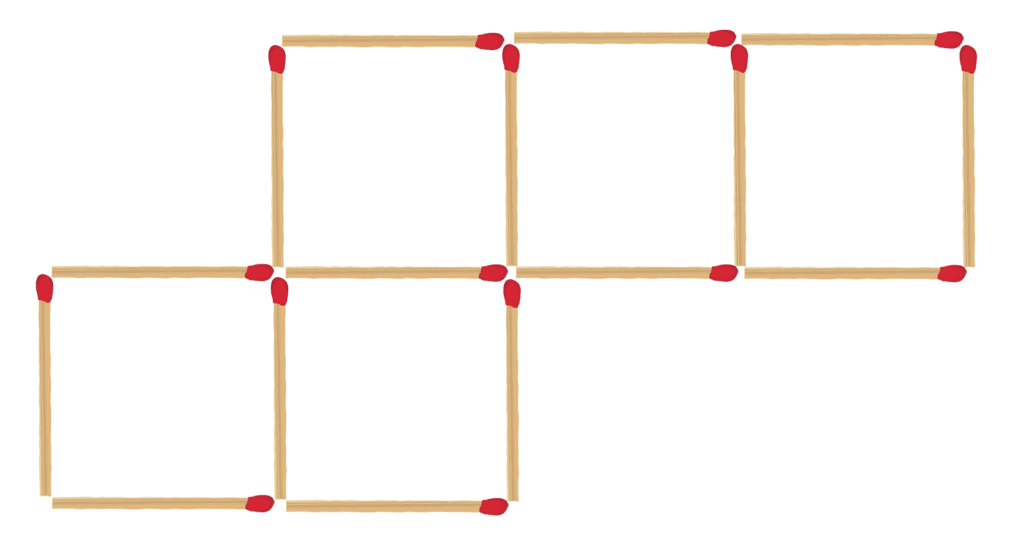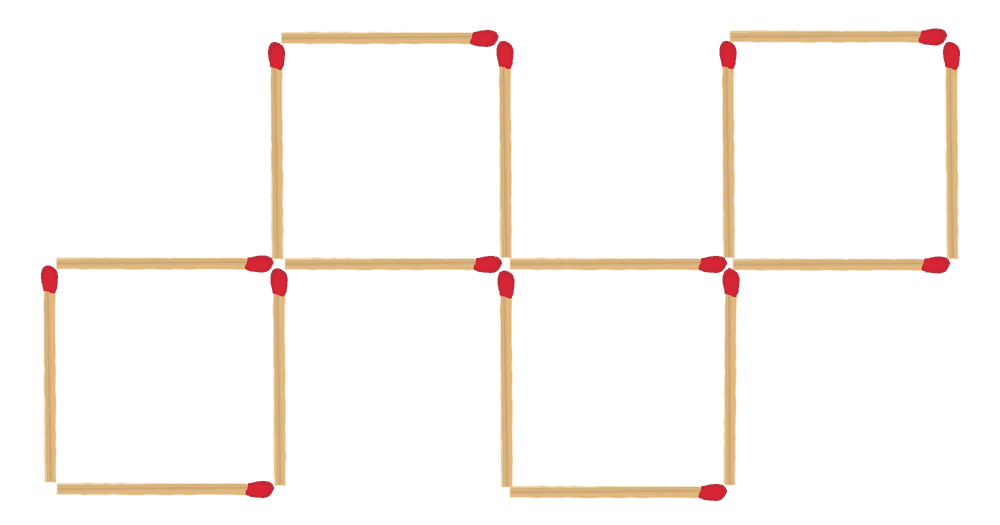5 Lines With 4 Points
On the image below you can see 11 points in the plane placed in such

Simply draw a pentagon.

We do not know where this puzzle originated from. If you have any information, please let us know via email.
On the image below you can see 11 points in the plane placed in such

Simply draw a pentagon.

An eighty-year-old person was living alone in his house. On a sunny Friday morning, while delivering some letters in the mailbox, the postman felt suspicious and decided to look through the window of the house. That’s when he saw the old man lying dead on the floor in a puddle of blood. When the police arrived, they found three bottles of milk, the Tuesday’s newspaper, and some gifts in front of the house. The lock of the door was broken, and they already suspected a person. Whom and why?
The police suspected the newspaper boy. Since there were 3 bottles of milk, the old man must have been dead for
King Arthur and his eleven honorable knights must sit on a round-table. In how many ways can you arrange the group, if no honorable knight can sit between two older honorable knights?

The answer is 1024 ways, up to rotation around the table. To see this, note that the youngest honorable knight must sit right next to King Arthur – there are two possible places for him. Then, the second-youngest knight must sit right next to this group of two. Once again, there are two possible places for him. Continuing like this, we see that for all honorable knights, except for the oldest one, there are two possible spots on the table. Multiplying two to the power of ten out, we get 1024.
Puzzil Primus was born on the 314th day of year 20B.C. and died on the 271st day of year 20A.D. How old was he when he died?

Puzzil Primus was 38 years old. This is because day 314 comes after day 271, and also there is no year 0 in the calendar.
Move only 2 matchsticks so that you get 4 (identical) squares. There should not be any spare matchsticks left.

The solution is shown below.

A sundial has the fewest moving parts of any timepiece. Which has the most?
The hourglass, it has thousands of grains of sand.
You have 10 strings of pasta left on your plate. You randomly start tying up their ends, until there are no loose ends anymore. What is the average number of loops which are created?

The expected (average) number of loops at the end of the procedure is equal to the expected number of loops created after the first tying, plus the expected number of loops created after the second tying, etc. After each tying, the number of non-loop strings decreases by 1, and then the probabilities to create a new loop are 1/19, 1/17, 1/15, etc. Therefore, the answer is the sum 1/19 + 1/17 + 1/15 + … + 1/3 + 1/1 ~ 2.1.
What four-letter word can be written forward, backward or upside down, and can still be read from left to right?
The word NOON.
Imagine you have three identical bricks and want to find the common length of their main diagonals. What is the easiest way to do this using just a measuring tape?

PLace the bricks as shown on the image below, then measure the marked segment.

Please confirm you want to block this member.
You will no longer be able to:
Please allow a few minutes for this process to complete.